


Ambulance 1915 Hogge Crater Belgique
English Translation
Merci à Jean Marie Brams pour les Photos
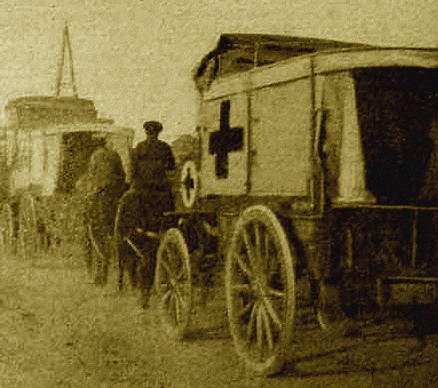 |
Historique Voir ICI
History Click HERE
L'unité médicale se trouve toujours à côté d' un poste de secours régimentaire et son rôle à considérablement augmentée et varié depuis le début de la guerre, conformément aux évenements
A l'origine de sa tâche principale était d'évacuer les malades et les blessés des postes de secours régimentaires, le soir ou lors des accalmies durant une bataille . Ceux ci étaient alors evacués vers l(arrieres sur des centre de triage . Ils étaient organsiés en trois ou quatre bataillons, en action sur un large front,. Ces bataillons étaient eux même subdivisés en trois sections, chacune capable d'agir indépendamment, . Chaque section avec une escouade de brancardiers
Cette organisation valait pour certains fronts dans lesquelles l'armée britannique a combattu mais parfois les circonstances ont obligé a apporter des modificationq .
Leur organisation demeure la mêm mais en 1915/16 si chacune possède une dizaine de véhicules pour le transport des blessés, 7 d'entre eux sont maintenant des voitures d'ambulance à moteur, qui remplacent les charette hippomobiles . Elle perdent aussi leurs 9 officiers de sante
En outre, si tous les A.D.M.S.(senior officer of a division Officier supérieur d'une division) a encore trois ambulances de campagne sous leur commandement direct celles ci peuvent ausi agir de façon indépendante en combinant des moyens des ADMS d'une autre division, ; Ainsi on peut trouver sur le terrain les ambulances de toutes les divisions d'un corps d'armée
Aussi une nouvelle doctrine d'emploi voient le jour et es tâches qu'ils accomplissent collectivement sont maintenant bien définies:
1. Recueillir les malades et les blessés de bataillons, et les evacuer en arriere de l ligne de front
2. Faire un tri sommaire dès le début
3. Continuité des soins en attendant l'évacuation.
4. Prevenir les "épidimies" locales afin de sauvegarder le potentiel militaire des unites.
5. Assurer ae decontamination des hommes des locaux et des vetements afinp de lutter contre la vermine, et les épidémies.
6. Formation permanente des personnels afin de pallier aux lacunes éventuelles dans les établissements médicaux régimentaires Les postulants doivent donc être envoyer en premier ligne pour un temps afin de voir comment le travail se fait.
7. Pour fournir une aide temporaire en cas de besoin aus formations de santé divisionnaires
8. Etablir des postes de secours sur le front pours les opérations d'urgence immédiates, (comme celles requises dans les cas de plaies abdominales. )
9. Pour les zones de stationnement en arriere veiller au bien être sanitaire ( WC douches etc)
The medical unit lying next behind a regimental aid post is one of those whose functions, though not necessarily their organization, have been considerably augmented or otherwise varied since the war began, in accordance with local requirements.
Originally its main duty was to relieve of their sick and wounded the regimental aid posts, helping them also to clear the field at nightfall or whenever there was a pause in the battle, and treating the cases until it was possible to send them to treatment centres well away from the front. It had to serve in this way simultaneously three or four battalions, all presumed to be in action on an extended front, and the better to fit it for this work a field ambulance was made divisible into three sections, each capable of acting independently, and each again divisible into a stretcher-bearer subdivision for collecting the wounded and a tent subdivision for treatment of the patients.
In several of the localities in which the British army has been fighting during the last three years field ambulances have, no doubt, been working on this plan, but in France the conditions have necessitated a modification of their work and also to some extent of their constitution.
Each remains divisible as before, and each still possesses ten vehicles for the conveyance of wounded but seven of these are now motor ambulance cars, replacing seven horse- drawn ambulance wagons, and of the nine original medical officers one has been withdrawn. Furthermore, though every A.D.M.S. (senior officer of a division) still has three field ambulances under his direct command for the work of his division, and each of these retains its capacity to work as an independent unit, he sometimes combines forces with the A.D.M.S. of another division, or the field ambulances of all the divisions of an army corps are in effect massed.
The duties they collectively perform are now practically as follows:
1. To collect the sick and wounded from battalions, whether these be actually fighting, serving as supports, or temporarily resting out of the line.
2. To decide what cases must be evacuated, and what shall be treated at the front.
3. To provide permanent treatment for those who fail to pass through the filter thus established, and for the rest temporary treatment pending evacuation.
4. To pursue a like course in respect of local sick, that is to say, cases of illness or injury arising amongst the large number of men whose presence just in the rear of the fighting line is essential to military operations.
5. To provide for the cleansing at frequent intervals of the persons of the men, the ridding of their clothes from vermin, and their disinfection when epidemic disease is in question.
6. To fill any gaps in the medical establishments of regiments, and to train medical officers and men for this work by sending them for a time to the battalions to see how regimental work is done.
7. To provide temporary assistance when needed to casualty clearing stations belonging to the army of which the divisional field ambulances form part.
8. To establish advanced operating stations for immediate emergency operations, such as those required in cases of abdominal wounds.
9. To supplement the sanitary work of battalion medical officers when the battalions concerned are located in places which are out of the fighting line but not in direct charge of the sanitary staffs of the army of which the battalions form part.
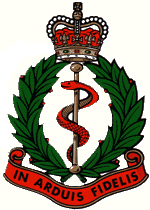 |
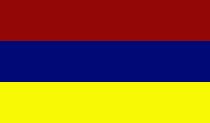 |
| RAMC | RAMC |
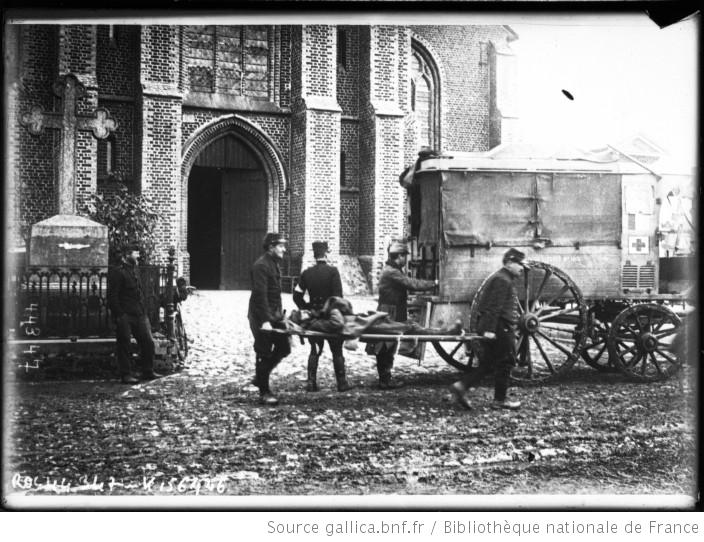 |
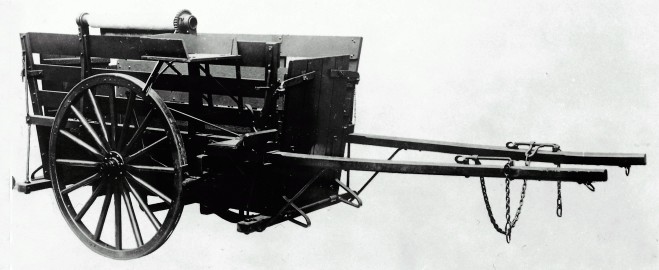 |
| Ambulance Internet |
Ambulance Internet |